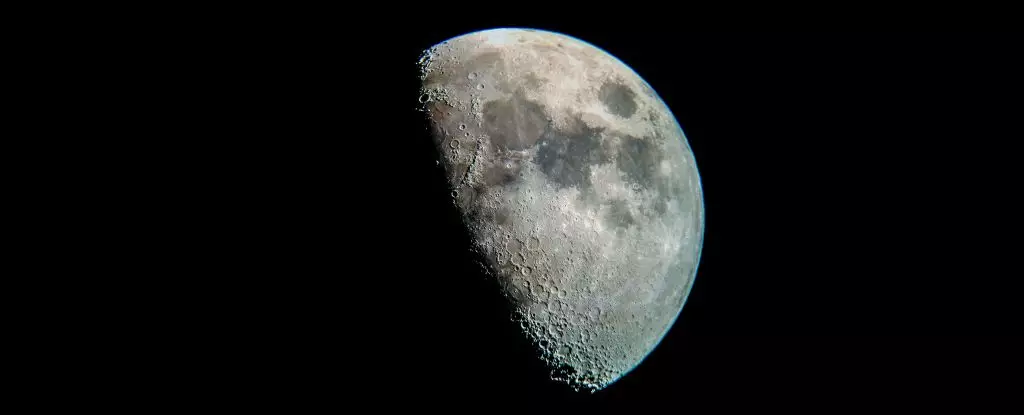The romantic notion that the Moon is made of green cheese has been firmly debunked, thanks to groundbreaking research published in May 2023. This recent study provides significant revelations about the Moon’s inner structure, particularly confirming the existence of a solid inner core. Under the leadership of astronomer Arthur Briaud from the French National Centre for Scientific Research, a team of researchers has painstakingly gathered seismic data and modeled various scenarios to uncover what lies beneath the lunar surface. Such findings are not merely academic; they hold profound implications for our understanding of the Moon’s formation, evolution, and even its magnetic history.
The Quest for Lunar Truth
With origins steeped in the mystery of celestial bodies, the quest for understanding the Moon has always been challenging. Past investigations struggled with the inadequacies of Apollo-era seismic data. While we had a fair amount of information regarding the Moon’s outer structure, the inner core had remained elusive. The resolution of the data obtained through earlier lunar missions was simply not enough to determine the state of the Moon’s heart—whether solid or molten remained an open question.
Briaud and his colleagues set out to resolve this mystery by employing a fusion of seismic data and lunar laser-ranging experiments. Their approach involved investigating various physical characteristics of the Moon, including gravitational interactions with Earth, distance variations, and the Moon’s overall density. This meticulous investigation yielded surprising results and a fresh perspective on the Moon’s inner workings.
Insights from Seismic Activity
The role of seismic activity in understanding celestial formations cannot be overstated. Acoustic waves from lunar quakes serve as vital tools, illuminating the structure of the Moon’s interior by their propagation and reflection through different materials. By analyzing these waves, scientists can create detailed interior maps—much like assembles from puzzle pieces.
Briaud’s team found that the most accurate models of the Moon suggest a complex mechanism of mantle overturn. This means that the denser materials sink toward the Moon’s center, while lighter materials rise, effectively creating a dynamic structure deep underground. This overturn process mirrors Earth’s own geological behavior and offers crucial insights into the Moon’s volcanic geography. The study adds another layer to the already substantial evidence supporting active geological processes on the Moon, indicating that it is far from being a dormant celestial body.
Lunar Core: Earth-Like Characteristics
The findings further proposed that the inner core of the Moon is strikingly similar to that of Earth. According to the research, the Moon’s core consists of an outer fluid layer encasing a solid inner core with substantial density, echoing the structure known in our own planet. With the inner core measuring approximately 258 kilometers (160 miles) across, the researchers calculated its density to be around 7,822 kilograms per cubic meter.
Interestingly, similar findings had emerged almost a decade earlier; a NASA team found evidence for a solid inner core with characteristics that aligned closely with Briaud’s conclusions. This confirms a remarkable consistency in lunar core models over the years, suggesting that the Moon may have undergone evolution akin to that of Earth. The implications of these analogous core structures could reshape our understanding of lunar formation and geological processes.
The Magnetic Mystery
One of the most tantalizing questions stemming from this study pertains to the Moon’s historical magnetic field. Data indicates that the Moon possessed a robust magnetic field shortly after its formation, which began to fade roughly 3.2 billion years ago. Investigating the nature of the magnetic field, generated by movements within the core, is pivotal for uncovering why it diminished over time and how that relates to the inner core’s properties.
Understanding the core’s dynamics provides potential explanations for this decline in magnetism. If convection and motion in the core were responsible, then Briaud’s findings add a new layer to the prevailing theories about the Moon’s magnetic history. Moreover, with renewed interest in lunar exploration and the future potential for manned missions, the groundwork laid by this research might soon lead to seismic verification of these critical insights.
A Step Towards Lunar Revival
As humanity sets its sights on returning to the Moon, the timing of Briaud’s findings could not be more opportune. These scientific revelations are more than merely academic; they inspire hope and fuel our adventurous spirit, igniting public and governmental interest in further lunar exploration. With the prospect of uncovering even more secrets locked within our celestial neighbor, this research serves as a foundation for our cosmic curiosity and encourages a closer examination of our Solar System’s enigmatic histories. The Moon, once thought to be simply a glowing orb in the night sky, is now emerging as a vibrant geological entity, deserving of our keen attention and continued exploration.

